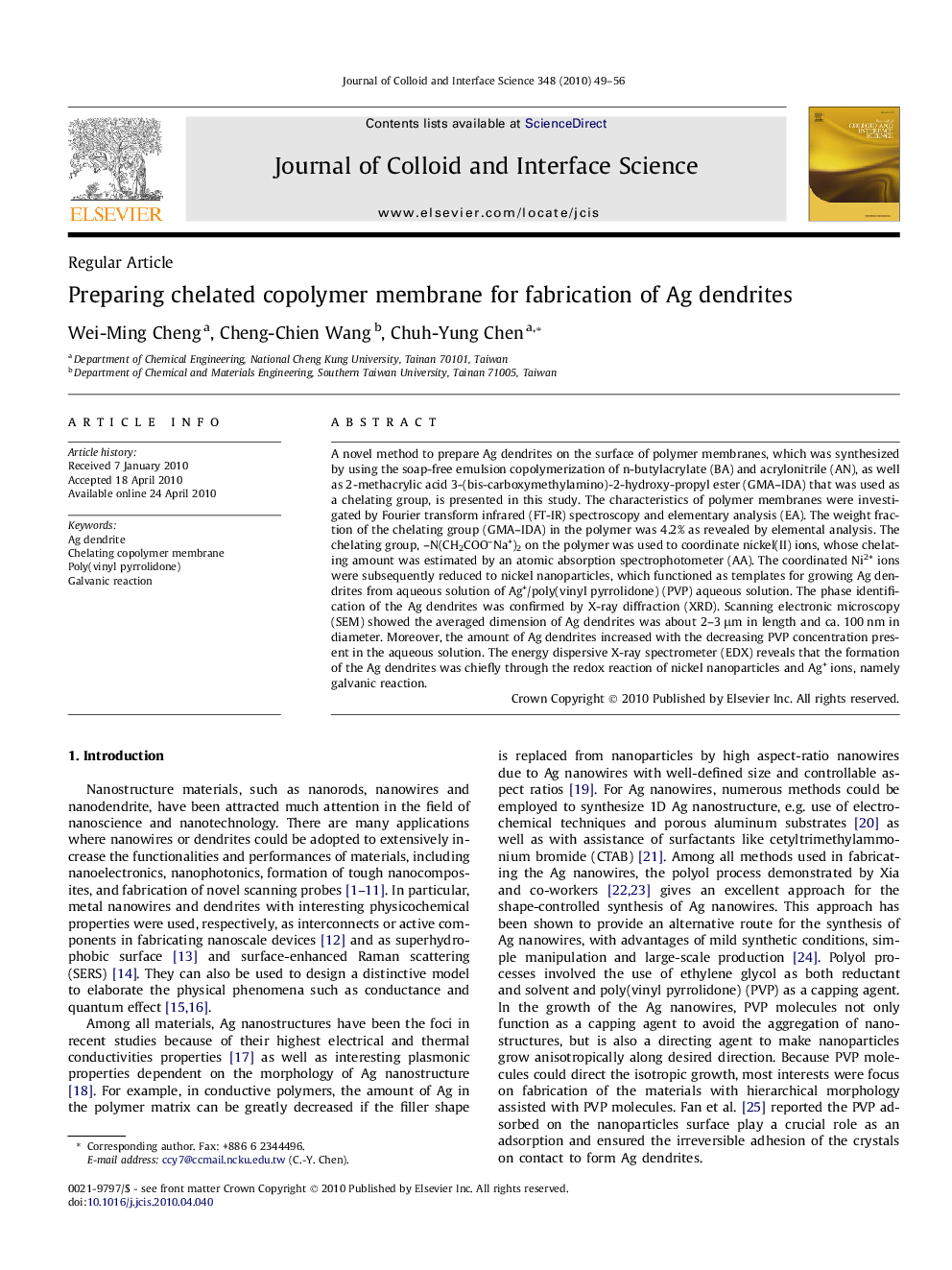| Article ID | Journal | Published Year | Pages | File Type |
|---|---|---|---|---|
| 609364 | Journal of Colloid and Interface Science | 2010 | 8 Pages |
A novel method to prepare Ag dendrites on the surface of polymer membranes, which was synthesized by using the soap-free emulsion copolymerization of n-butylacrylate (BA) and acrylonitrile (AN), as well as 2-methacrylic acid 3-(bis-carboxymethylamino)-2-hydroxy-propyl ester (GMA–IDA) that was used as a chelating group, is presented in this study. The characteristics of polymer membranes were investigated by Fourier transform infrared (FT-IR) spectroscopy and elementary analysis (EA). The weight fraction of the chelating group (GMA–IDA) in the polymer was 4.2% as revealed by elemental analysis. The chelating group, –N(CH2COO–Na+)2 on the polymer was used to coordinate nickel(II) ions, whose chelating amount was estimated by an atomic absorption spectrophotometer (AA). The coordinated Ni2+ ions were subsequently reduced to nickel nanoparticles, which functioned as templates for growing Ag dendrites from aqueous solution of Ag+/poly(vinyl pyrrolidone) (PVP) aqueous solution. The phase identification of the Ag dendrites was confirmed by X-ray diffraction (XRD). Scanning electronic microscopy (SEM) showed the averaged dimension of Ag dendrites was about 2–3 μm in length and ca. 100 nm in diameter. Moreover, the amount of Ag dendrites increased with the decreasing PVP concentration present in the aqueous solution. The energy dispersive X-ray spectrometer (EDX) reveals that the formation of the Ag dendrites was chiefly through the redox reaction of nickel nanoparticles and Ag+ ions, namely galvanic reaction.
Graphical abstractThe chelated copolymer membrane (PBAGI membrane) functions as a template for growing Ag dendrites with assistance of PVP moleculesFigure optionsDownload full-size imageDownload high-quality image (132 K)Download as PowerPoint slide
